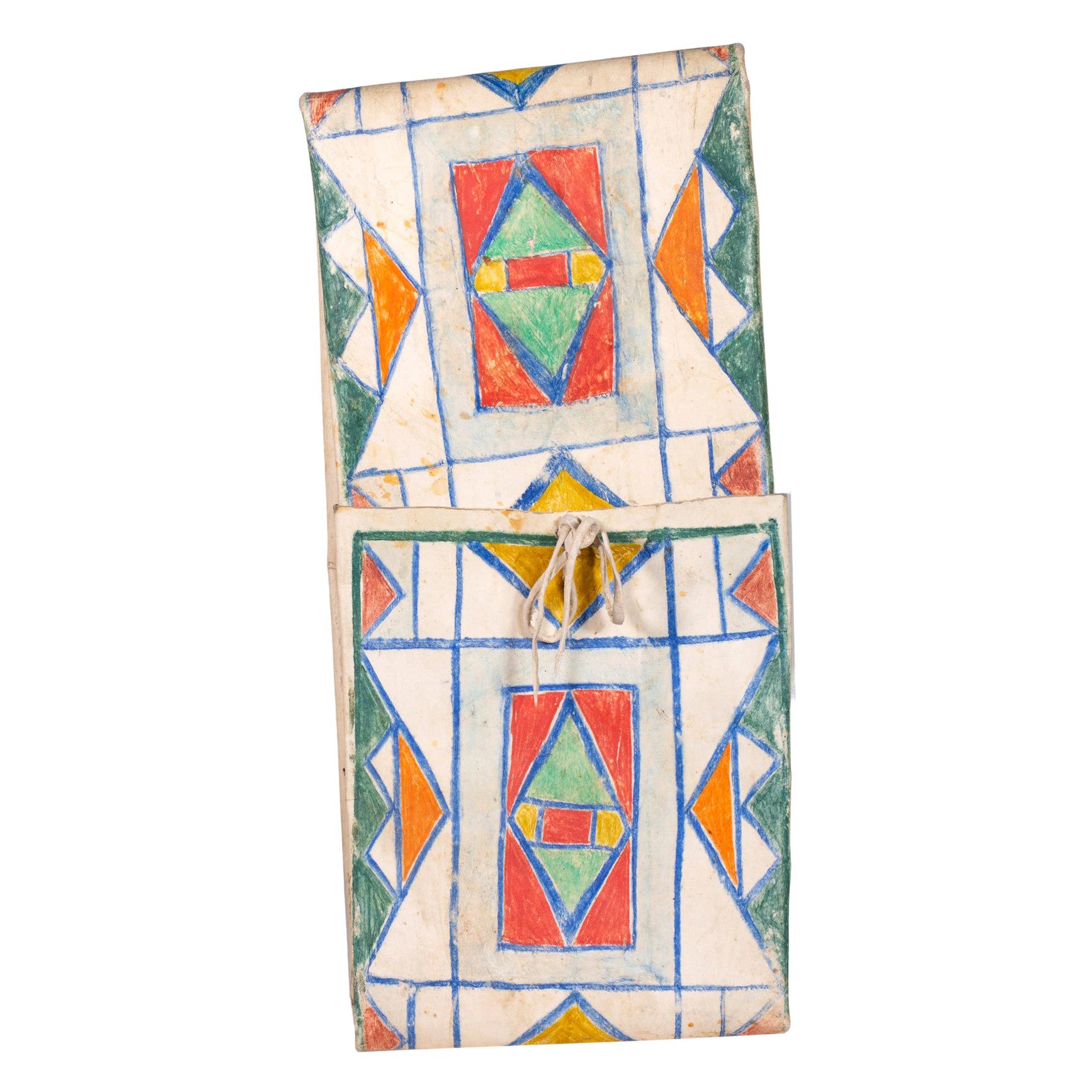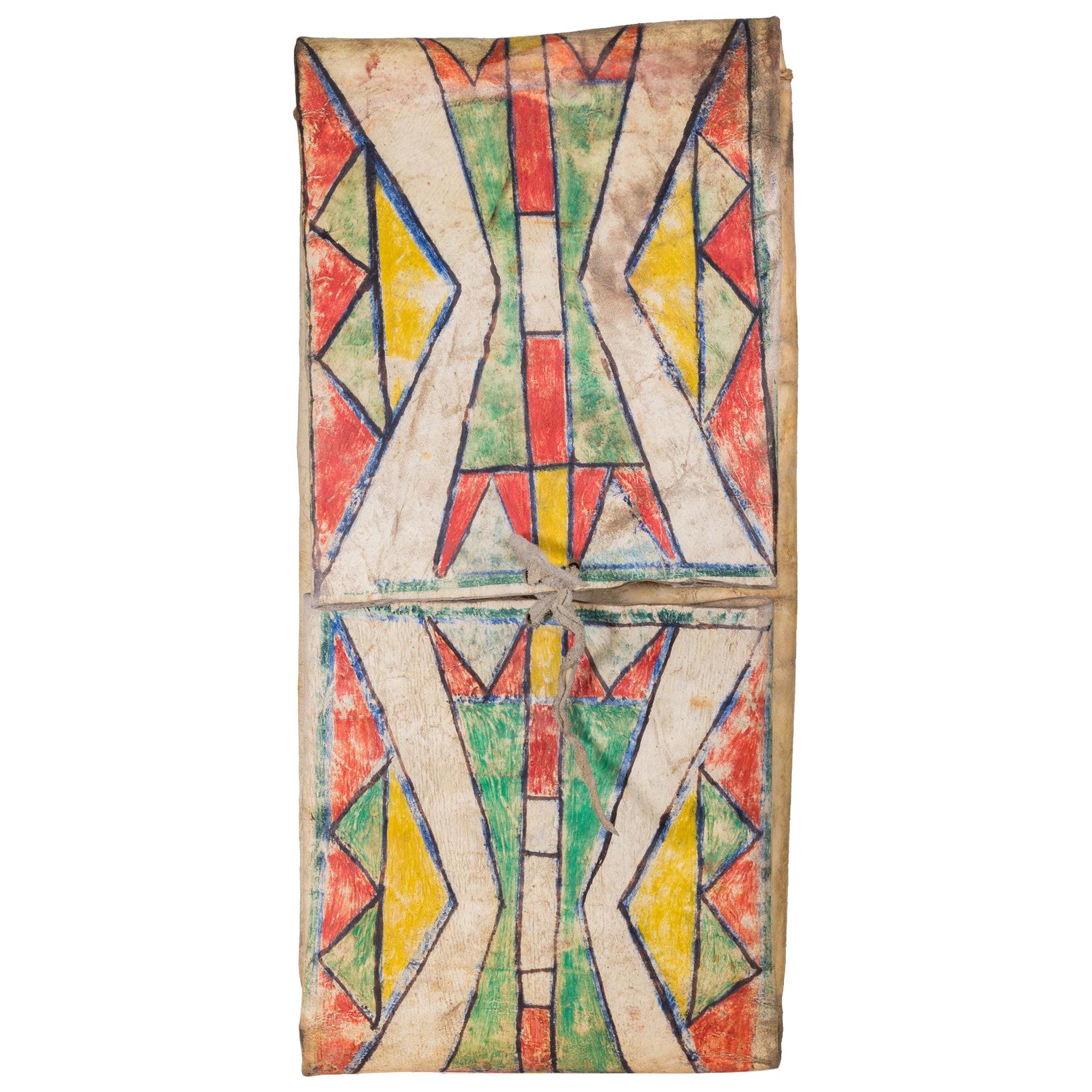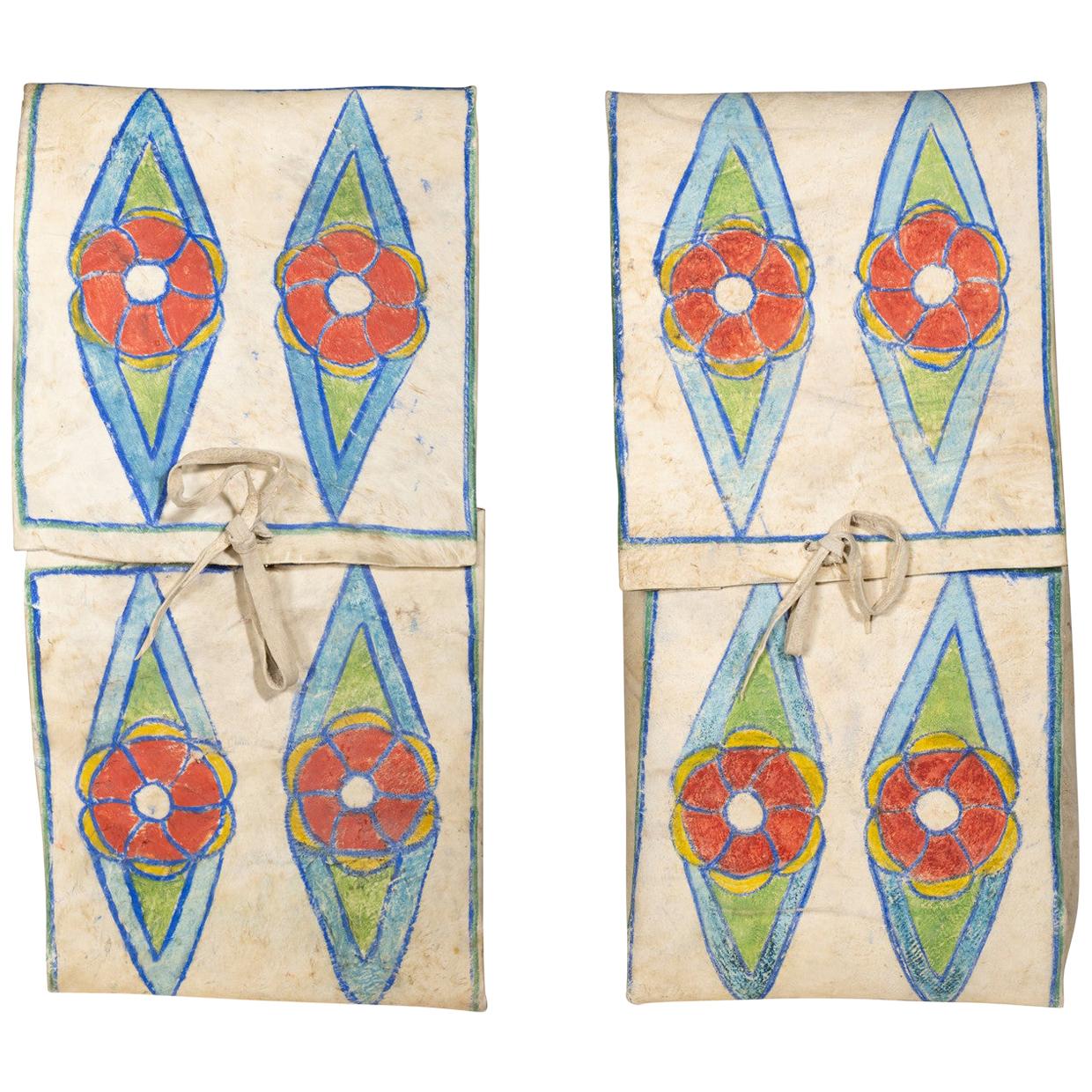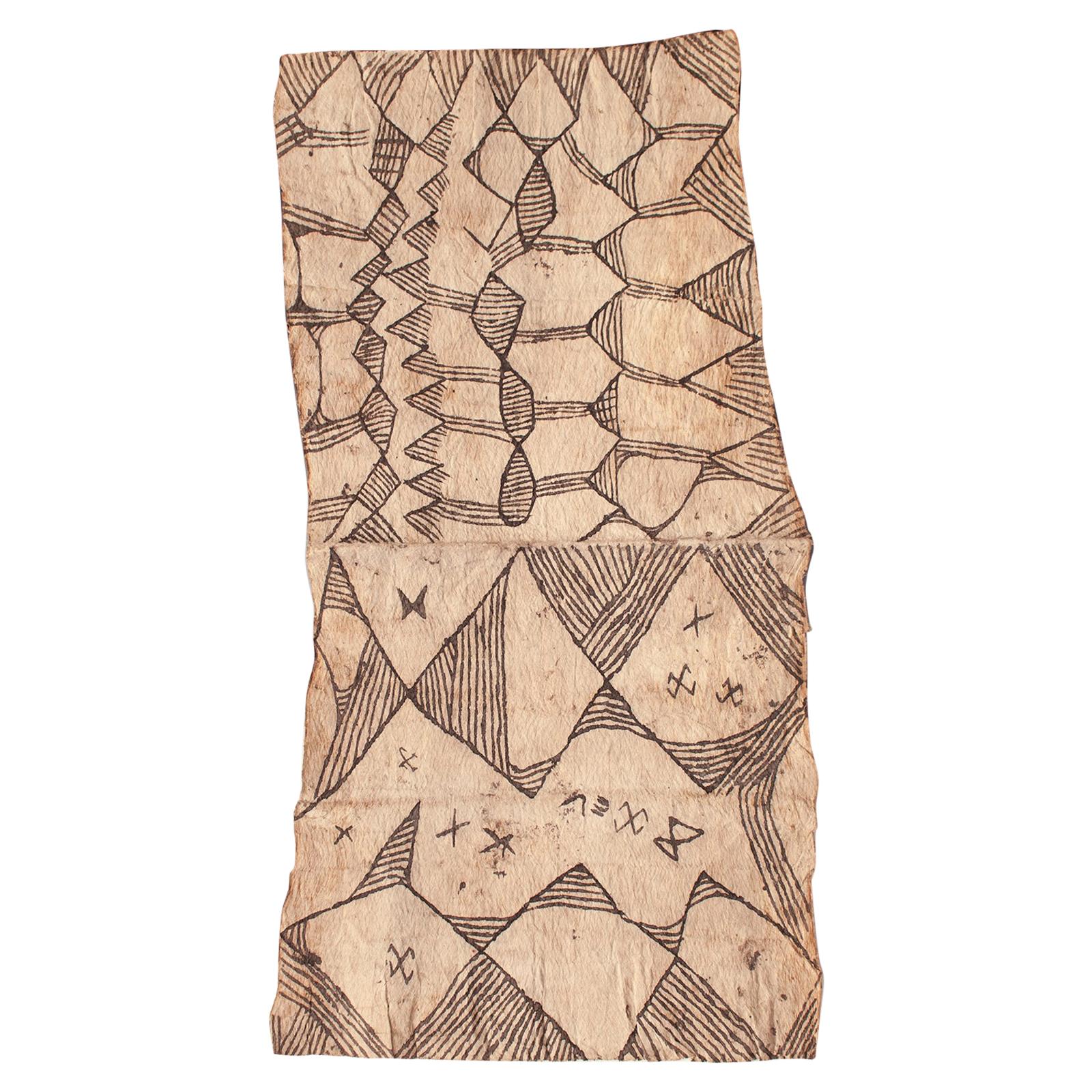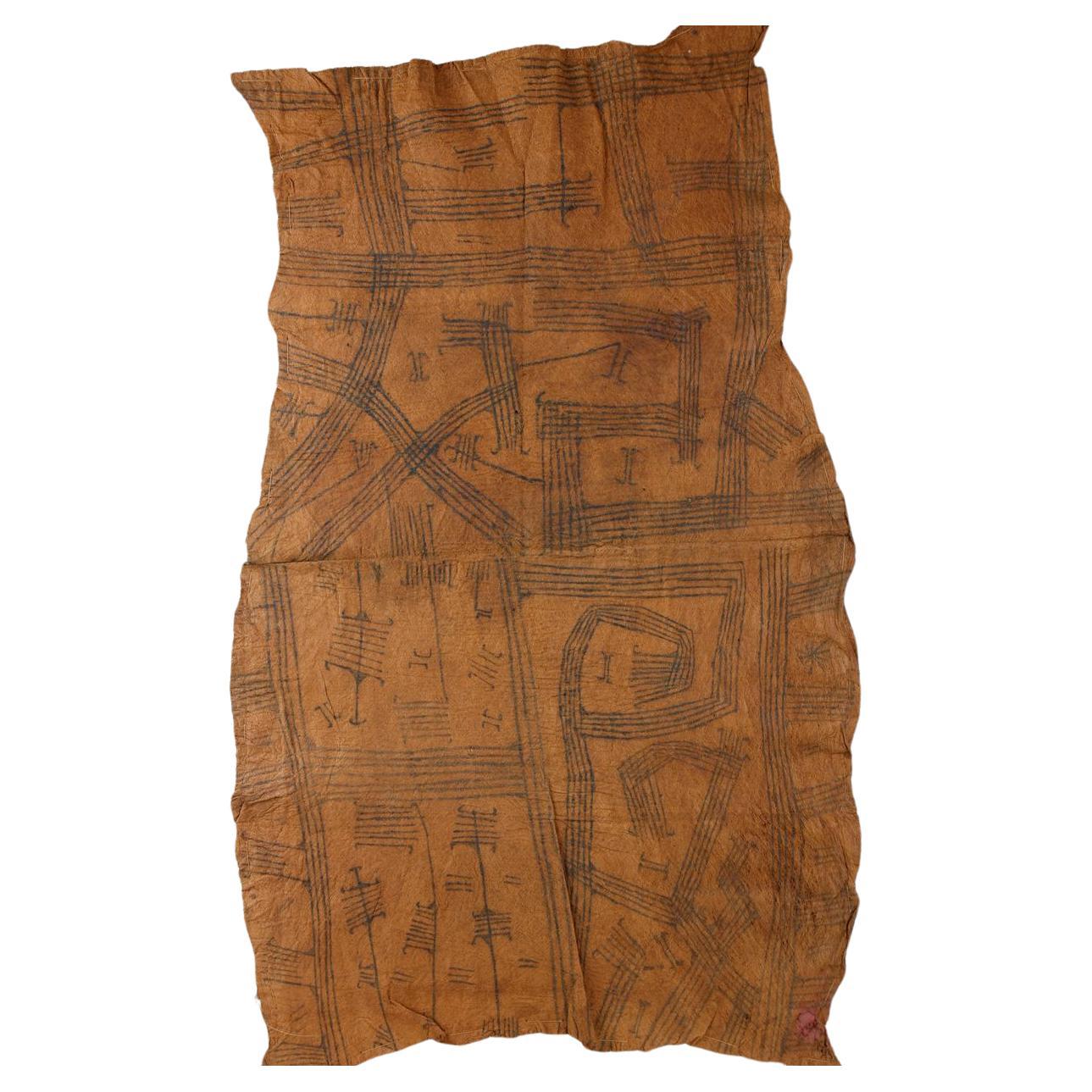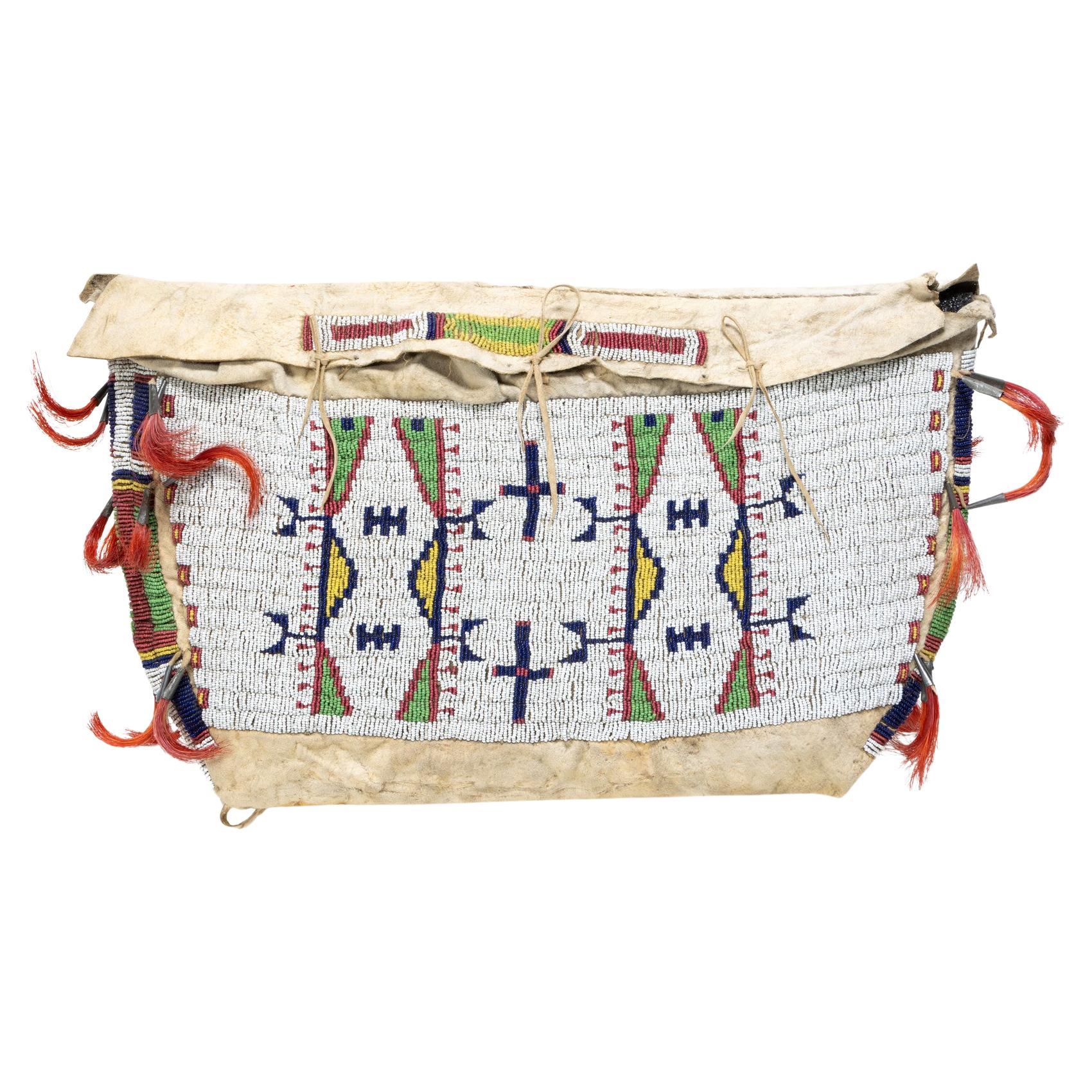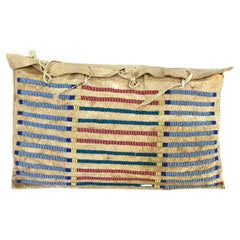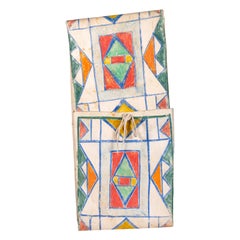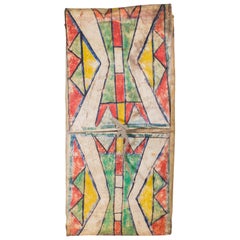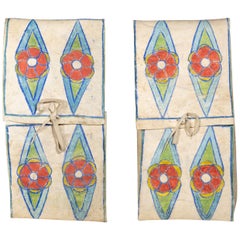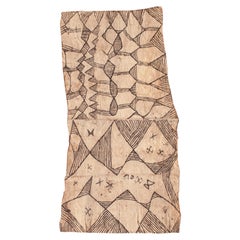Items Similar to Plateau Parfleche Envelope, 19th Century Native American Rawhide Art
Video Loading
Want more images or videos?
Request additional images or videos from the seller
1 of 8
Plateau Parfleche Envelope, 19th Century Native American Rawhide Art
$7,200
£5,413.82
€6,286.76
CA$10,054.65
A$11,151.35
CHF 5,856.14
MX$136,946.51
NOK 74,133.20
SEK 69,908.60
DKK 46,906.13
Shipping
Retrieving quote...The 1stDibs Promise:
Authenticity Guarantee,
Money-Back Guarantee,
24-Hour Cancellation
About the Item
This exceptional hand-painted parfleche envelope is a striking example of 19th-century Native American art from the Plateau cultural region. Crafted from rawhide and adorned with bold geometric designs, the piece reflects the ingenuity and visual language of Plateau tribes such as the Nez Perce, Flathead, Kalispel, Kutenai, Coeur d’Alene, and Palus.
Parfleches—named by French traders and meaning “to parry arrows”—were traditionally made by Indigenous women using untanned hide, folded into flat, portable containers. They were used to store and transport clothing, tools, food, and other personal items during seasonal migrations. Though functional in origin, these pieces were also works of symbolic and cultural expression, with painted designs serving as identifiers of tribal affiliation, spiritual beliefs, and social status.
This envelope-form parfleche features a vibrant abstract composition in natural pigments, showcasing a sophisticated use of color, symmetry, and spatial rhythm. The vivid design reflects the evolution of parfleche painting from body tattooing motifs, making each example a unique expression of tribal identity and female artistry.
Highly versatile, this artifact can be displayed flat or vertically as a decorative wall hanging, or mounted on a stand or shelf to emphasize its sculptural form. It also pairs beautifully with other parfleche objects for a curated ethnographic display.
With its refined composition and historical authenticity, this painted rawhide container stands as a rare and collectible example of Native American Plateau artistry, offering insight into the creative and functional lives of Indigenous peoples of the North American West.
Please contact us for additional images, condition details, or a custom shipping quote. Authenticity guaranteed. Expedited shipping available upon request.
- Creator:Plateau Indians (Maker)
- Dimensions:Height: 34 in (86.36 cm)Width: 16.5 in (41.91 cm)Depth: 2.5 in (6.35 cm)
- Style:Native American (In the Style Of)
- Materials and Techniques:
- Place of Origin:
- Period:
- Date of Manufacture:circa 1870
- Condition:Wear consistent with age and use.
- Seller Location:Denver, CO
- Reference Number:Seller: 203721stDibs: LU1004629015592
About the Seller
5.0
Recognized Seller
These prestigious sellers are industry leaders and represent the highest echelon for item quality and design.
Established in 1979
1stDibs seller since 2013
147 sales on 1stDibs
Typical response time: 18 hours
- ShippingRetrieving quote...Shipping from: Denver, CO
- Return Policy
Authenticity Guarantee
In the unlikely event there’s an issue with an item’s authenticity, contact us within 1 year for a full refund. DetailsMoney-Back Guarantee
If your item is not as described, is damaged in transit, or does not arrive, contact us within 7 days for a full refund. Details24-Hour Cancellation
You have a 24-hour grace period in which to reconsider your purchase, with no questions asked.Vetted Professional Sellers
Our world-class sellers must adhere to strict standards for service and quality, maintaining the integrity of our listings.Price-Match Guarantee
If you find that a seller listed the same item for a lower price elsewhere, we’ll match it.Trusted Global Delivery
Our best-in-class carrier network provides specialized shipping options worldwide, including custom delivery.More From This Seller
View All19th Century Crow Beaded Tepee Bag, Plains Indian Antique, Circa 1860-1875
By Native American Art
Located in Denver, CO
This exquisite 19th-century Crow (Plains Indian) beaded Tepee bag, dating from circa 1860-1875, is a rare and authentic example of Native American artistry. The bag is expertly const...
Category
Antique Late 19th Century American Native American Tribal Art
Materials
Hide, Beads
19th-Century Kiowa-Apache Beaded Hide Bag, Native American Plains Artifact
By Native American Art
Located in Denver, CO
This rare and beautifully preserved 19th-century Kiowa-Apache hide bag is an exceptional example of Native American Plains artistry and craftsmanship. Expertly hand-stitched from nat...
Category
Antique 19th Century American Native American Native American Objects
Materials
Hide, Beads
Vintage 1920s Navajo Double Saddle Blanket, Maltese Cross Design, Neutral Tones
By Navajo Indian Art
Located in Denver, CO
This vintage Navajo double saddle blanket, woven in the early 20th century (likely the 1920s), is a stunning example of traditional Navajo weavin...
Category
Early 20th Century American Native American Native American Objects
Materials
Wool
Plains Indian Quillwork Tobacco Bag, Native Hide & Beads, c. 1850–1880
By Native American Art
Located in Denver, CO
This exceptional mid-19th century Plains Indian tobacco bag is a rare and visually compelling example of traditional Native American artistry from the Northern Plains region. Crafted...
Category
Antique Late 19th Century American Native American Native American Objects
Materials
Hide, Beads
Antique Crow Beaded Knife Sheath, circa 1870, Native American Plains
By Crow
Located in Denver, CO
This exceptional Crow (Apsáalooke) beaded knife sheath, dating to circa 1870, is an outstanding artifact from the Classic Period of Native American artist...
Category
Antique Mid-19th Century American Native American Native American Objects
Materials
Hide
Circa 1880 Antique Cheyenne Plains Native American Beaded Leggings, 19th Century
By Native American Art
Located in Denver, CO
This stunning pair of antique 19th-century Cheyenne Plains Tobacco Society beaded leggings, dating back to the 1880s, showcases the artistry and cultur...
Category
Antique Late 19th Century American Native American Native American Objects
Materials
Hide, Beads
You May Also Like
Plateau Parfleche Envelope, circa 1900
By Plateau Indians
Located in Coeur d'Alene, ID
Plateau painted parfleche envelope painted in green, blue, orange, yellow and red.
Period: circa 1900
Origin: Plateau
Size: 28" L x 12" W.
Family ...
Category
Antique Early 1900s American Native American Native American Objects
Materials
Other
19th Century Plateau Parfleche
By Plateau Indians
Located in Coeur d'Alene, ID
Plateau parfleche of steer or elk hide, gun barrel scraper used. Ex. LaPlant collection.
Period: Last quarter 19th century
Origin: Plateau
Size: 12" x 24".
Family Owned & Ope...
Category
Antique Late 19th Century American Native American Native American Objects
Materials
Other
Pair Plateau Parfleche Packets
By Plateau Indians
Located in Coeur d'Alene, ID
Matched pair of Plateau parfleche packets with diamonds and stylized flowers and brain tanned ties. Difficult to find a pair. Very nice, rare design.
The term parfleche was first co...
Category
Antique Early 1900s American Native American Native American Objects
Materials
Other
$9,680 / item
20th Century Bark Cloth Painting, Mbuti 'Efe' People, D.R. Congo
Located in Point Richmond, CA
20th Century bark cloth painting, Mbuti (Efe) people, Ituri Forest, D. R. Congo
A painted barkcloth from the Efe people in the Ituri forest of no...
Category
Vintage 1970s Congolese Tribal Drawings
Materials
Natural Fiber
Fine 1950's Mbuti Bark Cloth With Biomorphic Motifs
Located in London, GB
In the Democratic Republic of the Congo, the asymmetric, spontaneous and animated patterns of bark cloths made by Mbuti women for dances, festivities and coming-of-age ceremonies ref...
Category
Vintage 1950s Congolese Tribal Tribal Art
Materials
Natural Fiber
Native American Sioux Beaded Teepee Bag
By Sioux Indian Art
Located in Coeur d'Alene, ID
Native American Sioux beaded teepee bag. Having beaded front, sides and top. Beadwork is mostly white with blue, yellow, red, and green forming traditional geometric design. Having t...
Category
Antique Late 19th Century American Native American Native American Objects
Materials
Hide, Beads
More Ways To Browse
American West Furniture
Antique American Painted Furniture
19th Century Painted American Furniture
Antique Plateau
19th Century Indian Painting
Folk Art Shelf
Antique Indian Wall Art
Antique Native American Collectibles
Used Tattoo Furniture
Antique Tattoo
Antique Indian Shelf
Antique Indian Wall Hanging
Antique Indian Arrows
Arrows Native American
Indian Containers
Indian Tribes Of North America
Nez Perce
Indian Wall Shelf
